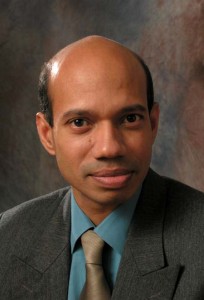Emergent axonal tension during synaptogenesis – a potential force connection to memory and learning
Memory and learning in animals are mediated by neurotransmitters that are released from vesicles clustered at the synapse. Vesicle clustering has been believed to result primarily from biochemical signaling processes that require the connectivity of the presynaptic terminal with the cell body, the central nervous system, and the postsynaptic cell. Our in vivo experiments with the embryonic Drosophila motor neurons show that vesicle clustering at the neuromuscular presynaptic terminal depends on mechanical tension within the axons. Neurons generate this tension within the first two hours of synaptogenesis, and actively maintain the tension by employing acto-myosin machinery. Vesicle clustering vanishes upon severing the axon from the cell body, but is restored when mechanical tension is applied to the severed end of the axon. Clustering increases when intact axons are stretched mechanically by pulling the postsynaptic muscle. Using nano mechanical force sensors, we find that embryonic axons maintain a rest tension of about one nano Newton. If the rest tension is perturbed mechanically, axons restore the rest tension either by relaxing or by contracting over a period of about 15 min. Our results suggest that neuromuscular synapses employ mechanical tension as a signal to modulate vesicle accumulation, and possibly synaptic plasticity.
Bio
 Dr Taher Saif received his BS and MS degrees in Civil Engineering from Bangladesh University of Engineering and Technology and Washington State University respectively in 1984 and 1986. He obtained his Ph.D degree in Theoretical and Applied Mechanics from Cornell University in 1993. He worked as a Post Doctoral Associate in Electrical Engineering and the National Nanofabrication Facility at Cornell University during 1993-97. He joined the Department of Mechanical Science and Engineering at the University of Illinois at Urbana-Champaign during 1997. He is currently the Gutgsell Professor in the department. His current research includes tumor micro-environment, mechanics of neurons and cardiac cells, development of biological machines, and electro-thermo-mechanical behavior of nano scale metals and semiconductors. His research has been supported by National Science Foundation, and National Institute of Health.
Dr Taher Saif received his BS and MS degrees in Civil Engineering from Bangladesh University of Engineering and Technology and Washington State University respectively in 1984 and 1986. He obtained his Ph.D degree in Theoretical and Applied Mechanics from Cornell University in 1993. He worked as a Post Doctoral Associate in Electrical Engineering and the National Nanofabrication Facility at Cornell University during 1993-97. He joined the Department of Mechanical Science and Engineering at the University of Illinois at Urbana-Champaign during 1997. He is currently the Gutgsell Professor in the department. His current research includes tumor micro-environment, mechanics of neurons and cardiac cells, development of biological machines, and electro-thermo-mechanical behavior of nano scale metals and semiconductors. His research has been supported by National Science Foundation, and National Institute of Health.
